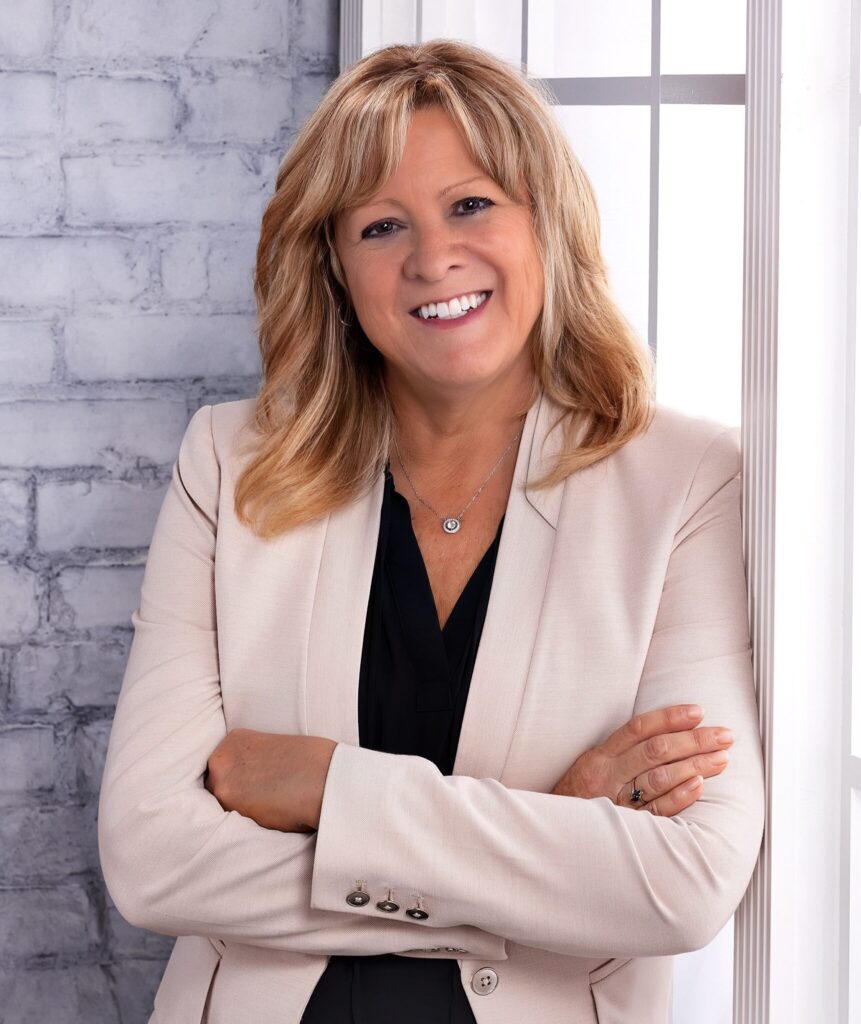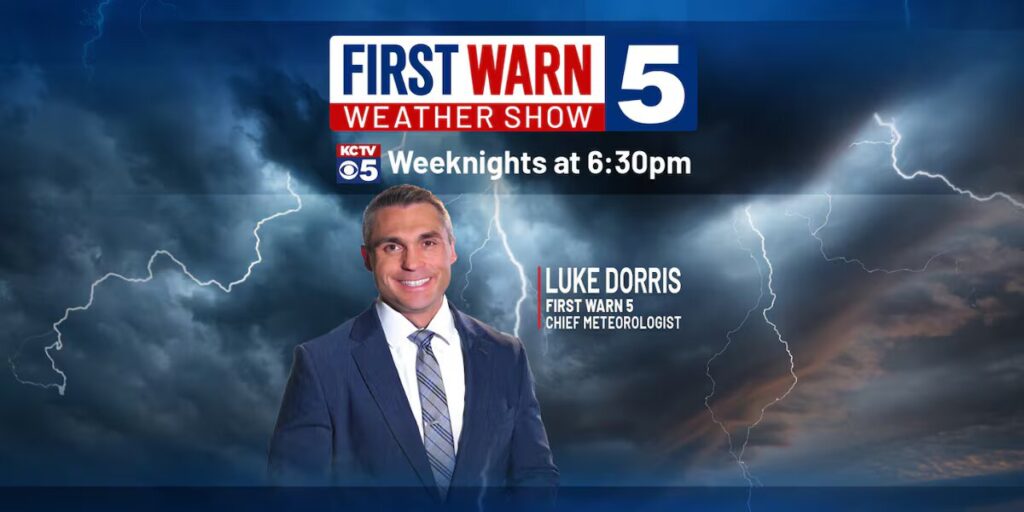
TVN Newsroom Innovators | KUSA Takes Investigative To New Lengths

In the Denver TV news landscape, there’s KUSA and everyone else. The Tegna-owned NBC affiliate, which occupies local ch. 9, sits perpetually atop the ratings at 5 p.m., 6 p.m. and 10 p.m. Across those respective time slots, according to Nielsen data supplied by KUSA, in February 2020 the station drew ratings of 2.45, 2.80 and 1.98. Its second-place competitors lagged behind with respective shares of 0.95, 0.83 and 1.19.
A major contributor to KUSA’s runaway success in broadcast news is its investigative reporting team. Branded “9 Wants to Know” since the early 1990s, it was then populated by a single reporter, the tough, trailblazing Paula Woodward, who’d worked at the station since 1977.

Nicole Vap
Today, the corps is led by KUSA’s director of investigative journalism, Nicole Vap, and features three full-time reporters, a producer and photographer. They’ve carried KUSA’s longstanding tradition of hard-hitting, community-impactful stories while, in keeping up with the times, have also adopted a series of innovative, diverse approaches to story packaging and delivery.
“I think we try a lot of different things,” Vap says. “We’re pushing the envelope.”
Embracing Creative Freedom
Treated with robust creative freedom from higher ups, 9 Wants to Know attends morning meetings with the entire broadcast news team, offering up their resources for daily news stories when needed. The investigative team’s specialty pieces arrive on nightly news broadcasts whenever they’ve been completed, though, with the reporters granted as much time as they need — at least, within reason.
“If you ask any reporter, they probably want two more weeks for everything,” Vap says. “I think some news departments are so worried about output and what people are doing every minute of the day, and you can’t be creative when you’re trying to figure out [how to be] busy every minute of the day.”
She adds that her team is mindful of sweeps ratings pushes and, in preparation, sets some hard deadlines for stories.
“But also, when you’re given that kind of opportunity [to be creative] people are gonna go far, and that’s what we need in this business right now — changing the way we do things, not doing the same thing every day,” Vap says.
Going In-Depth
Vap says a quintessential 9 Wants to Know story is far more in-depth than any typical nightly news story. Lately her cadre has placed a particular emphasis on data analysis, and is tasked with essentially selling pieces to the larger news team to procure what they feel is the appropriate amount of air time — blocks that can easily reach five minutes. Thus, the investigative team’s own colleagues serve as quality control’s first line of defense.
After the local community endured a series of tragic deaths resulting from drunk driving in late 2018, 9 Wants to Know spent months culling data from court records and found that less than one-third of individuals convicted on a recently enacted felony DUI law in Colorado actually ended up in prison. The investigative team tethered its extensive findings together into a series of pieces that Vap says led to new law change considerations on the part of officials.
“We want to be able to not just show what the problem is,” Vap says, “but also have that data and information, and quite frankly our community deserves that.”
The DUI series was outfitted with a stirring animation that climaxed with a ticking odometer under the headline “Still Drinking, Still Driving.” Vap says her team puts extra care into their graphics, aided by the fact that Tegna’s company-wide graphics outpost is located in the same Denver building.
In one six-minute story that also showed off KUSA’s graphics capabilities, 9 Wants to Know went undercover into gun stores to find out how ammunition sellers are exploiting a loophole in the state’s firearms laws. The sellers were boosting profits by offering large-capacity magazines that require simple assembly, even though any assembled magazine that held more than 15 rounds had been banned.
In the story, store clerks are heard hawking magazines that house as many as 60 rounds, and accompanying the clerks’ words in the 9 Wants to Know piece are large-type captions in white that boldly appear and disappear across the screen for eerie emphasis.

Gun store clerks are offering magazines that house as many as 60 rounds. Accompanying the clerks’ words are large-type captions in white that boldly appear and disappear across the screen for eerie emphasis.
Vap says her team has its hands on tiny cameras, some that fit into to-go coffee cups, but also remarks that “sometimes the best video you can get is from your iPhone.” For instance, in another 9 Wants to Know story about a rash of criminal activity at a local public library, reporter Jeremy Jojola recorded a drug deal in the teen literature section on his iPhone, with the footage’s quality good enough for broadcast.
“9NEWS is fertile ground for innovation,” Jojola wrote TVNewsCheck in an email. “We are allowed to try new ideas and drastically fail without fear or worry. Taking risks with new ways to deliver news is encouraged every day. It’s a wonderful and exciting place to be.”
Digital-First Content
In 2016, 9 Wants to Know launched its first podcast, Blame, part of the medium’s trendy true crime genre. Reporter Kevin Vaughan had been working for some time on a story about the shooting death of a wife and mother named Jill Wells. Her husband had said the killing was accidental, and that their six-year-old son had pulled the trigger, but questions about the police investigation lingered on.
Blame was and remains a pure pull-up-your-bootstraps effort, with the audio recorded in the same audio booth used to overdub broadcast news stories and spliced together in precisely the same way.
“We were total novices when we started doing this, and we tried to do it the way we know how to do it,” Vap says.
Aided by frequent cross promotion, the podcast has 400,000 followers, according to Vap, and has spawned numerous broadcast spots and digital video, too. Vap says her team will begin producing OTT content in the near future, flipping the script by then creating TV news stories from the digital-first batch.
“I think what we’ve learned is people want good content no matter where it is, and the more you can give it to them in different places, the more they’re going to be interested in it,” Vap says. “We need to be everywhere but with content that makes sense for those mediums.”
Corporate Support
Vap is proud of what 9 Wants to Know continues to accomplish, especially in this era of not only shaky consumer trust in news, but also low attention spans — which sometimes seems apocryphal. She says when investigative news is done well, even in longer forms, consumers will not only flock to it but demand more.
“I think there’s more of a commitment across the country to investigative journalism because you get [every bit of news] in your phone all day long,” Vap says. “You do not need to watch a newscast to find out what happened today. What you need out of your newscast is something different … and that’s what’s unique about investigative journalism, is we’re able to dig.”
She says such an approach reflects Tegna’s company-wide dedication to investigative reporting as well. Ellen Crooke, Tegna’s VP of news, seconds that notion while praising Vap’s team.
“Our mission as a company is to make the communities a better place to live, where each of our stations are, and what better way to do that than through the power of journalism,” Crooke says. “We work to give our investigators time, resources, training [and] we put so much emphasis into it.”
Crooke hails 9 Wants to Know as literal life savers who’ve held government officials accountable, and have also helped community members make more sound financial decisions as well.
“The 9 Wants to Know team does some of the best investigative reporting in the country,” she says, “and they do it truly in innovative ways. Their content is not just great investigative work but also it’s also just great content to watch. They’re great editors, great writers, and tenacious reporters that are always getting to the bottom of the story.”
Ultimately, 9 Wants to Know’s greatest asset might be their passion, which translates into gripping content. Vap says she only assigns stories to reporters who will be most enthusiastic about diving into them, and the team often employs stand-up approaches, extended Facebook live segments and Q & A sessions on Reddit, all creating more intimacy with the stories for the consumer.
“The more that reporters can do that … and experience that level of commitment and energy, people are going to love it,” Vap says. “Now, they may not like the outcome of the story, but they’ll argue about it, and they’ll watch it.”
Editor’s Note: This is the latest of TVNewsCheck’s “Newsroom Innovators” profiles, a series showcasing people and news organizations evolving the shape and substance of video reporting. These profiles will examine the inception of their innovations, the tools they employ and how they’re reconciling experimental approaches to news storytelling within daily workflows. You can find the others here.
KUSA Takes Investigative To New Lengths

In the Denver TV news landscape, there’s KUSA and everyone else. The Tegna-owned NBC affiliate, which occupies local ch. 9, sits perpetually atop the ratings at 5 p.m., 6 p.m. and 10 p.m. Across those respective time slots, according to Nielsen data supplied by KUSA, in February 2020 the station drew ratings of 2.45, 2.80 and 1.98. Its second-place competitors lagged behind with respective shares of 0.95, 0.83 and 1.19.
A major contributor to KUSA’s runaway success in broadcast news is its investigative reporting team. Branded “9 Wants to Know” since the early 1990s, it was then populated by a single reporter, the tough, trailblazing Paula Woodward, who’d worked at the station since 1977.
Today, the corps is led by KUSA’s director of investigative journalism, Nicole Vap, and features three full-time reporters, a producer and photographer. They’ve carried KUSA’s longstanding tradition of hard-hitting, community-impactful stories while, in keeping up with the times, have also adopted a series of innovative, diverse approaches to story packaging and delivery.
“I think we try a lot of different things,” Vap says. “We’re pushing the envelope.”
Embracing Creative Freedom
Treated with robust creative freedom from higher ups, 9 Wants to Know attends morning meetings with the entire broadcast news team, offering up their resources for daily news stories when needed. The investigative team’s specialty pieces arrive on nightly news broadcasts whenever they’ve been completed, though, with the reporters granted as much time as they need — at least, within reason.
“If you ask any reporter, they probably want two more weeks for everything,” Vap says. “I think some news departments are so worried about output and what people are doing every minute of the day, and you can’t be creative when you’re trying to figure out [how to be] busy every minute of the day.”
She adds that her team is mindful of sweeps ratings pushes and, in preparation, sets some hard deadlines for stories.
“But also, when you’re given that kind of opportunity [to be creative] people are gonna go far, and that’s what we need in this business right now — changing the way we do things, not doing the same thing every day,” Vap says.
Going In-Depth
Vap says a quintessential 9 Wants to Know story is far more in-depth than any typical nightly news story. Lately her cadre has placed a particular emphasis on data analysis, and is tasked with essentially selling pieces to the larger news team to procure what they feel is the appropriate amount of air time — blocks that can easily reach five minutes. Thus, the investigative team’s own colleagues serve as quality control’s first line of defense.
After the local community endured a series of tragic deaths resulting from drunk driving in late 2018, 9 Wants to Know spent months culling data from court records and found that less than one-third of individuals convicted on a recently enacted felony DUI law in Colorado actually ended up in prison. The investigative team tethered its extensive findings together into a series of pieces that Vap says led to new law change considerations on the part of officials.
“We want to be able to not just show what the problem is,” Vap says, “but also have that data and information, and quite frankly our community deserves that.”

Nicole Vap, KUSA’s director of investigative journalism: “We want to be able to not just show what the problem is, but also have that data and information, and quite frankly our community deserves that.”
The DUI series was outfitted with a stirring animation that climaxed with a ticking odometer under the headline “Still Drinking, Still Driving.” Vap says her team puts extra care into their graphics, aided by the fact that Tegna’s company-wide graphics outpost is located in the same Denver building.
In one six-minute story that also showed off KUSA’s graphics capabilities, 9 Wants to Know went undercover into gun stores to find out how ammunition sellers are exploiting a loophole in the state’s firearms laws. The sellers were boosting profits by offering large-capacity magazines that require simple assembly, even though any assembled magazine that held more than 15 rounds had been banned.
In the story, store clerks are heard hocking magazines that house as many as 60 rounds, and accompanying the clerks’ words in the 9 Wants to Know piece are large-type captions in white that boldly appear and disappear across the screen for eerie emphasis.
Vap says her team has its hands on tiny cameras, some that fit into to-go coffee cups, but also remarks that “sometimes the best video you can get is from your iPhone.” For instance, in another 9 Wants to Know story about a rash of criminal activity at a local public library, reporter Jeremy Jojola recorded a drug deal in the teen literature section on his iPhone, with the footage’s quality good enough for broadcast.
“9NEWS is fertile ground for innovation,” Jojola wrote TVNewsCheck in an email. “We are allowed to try new ideas and drastically fail without fear or worry. Taking risks with new ways to deliver news is encouraged every day. It’s a wonderful and exciting place to be.”
Digital-First Content
In 2016, 9 Wants to Know launched its first podcast, Blame, part of the medium’s trendy true crime genre. Reporter Kevin Vaughan had been working for some time on a story about the shooting death of a wife and mother named Jill Wells. Her husband had said the killing was accidental, and that their six-year-old son had pulled the trigger, but questions about the police investigation lingered on.
Blame was and remains a pure pull-up-your-bootstraps effort, with the audio recorded in the same audio booth used to overdub broadcast news stories and spliced together in precisely the same way.
“We were total novices when we started doing this, and we tried to do it the way we know how to do it,” Vap says.
Aided by frequent cross promotion, the podcast has 400,000 followers, according to Vap, and has spawned numerous broadcast spots and digital video, too. Vap says her team will begin producing OTT content in the near future, flipping the script by then creating TV news stories from the digital-first batch.
“I think what we’ve learned is people want good content no matter where it is, and the more you can give it to them in different places, the more they’re going to be interested in it,” Vap says. “We need to be everywhere but with content that makes sense for those mediums.”
Corporate Support
Vap is proud of what 9 Wants to Know continues to accomplish, especially in this era of not only shaky consumer trust in news, but also low attention spans — which sometimes seems apocryphal. She says when investigative news is done well, even in longer forms, consumers will not only flock to it but demand more.
“I think there’s more of a commitment across the country to investigative journalism because you get [every bit of news] in your phone all day long,” Vap says. “You do not need to watch a newscast to find out what happened today. What you need out of your newscast is something different … and that’s what’s unique about investigative journalism, is we’re able to dig.”
She says such an approach reflects Tegna’s company-wide dedication to investigative reporting as well. Ellen Crooke, Tegna’s VP of news, seconds that notion while praising Vap’s team.
“Our mission as a company is to make the communities a better place to live, where each of our stations are, and what better way to do that than through the power of journalism,” Crooke says. “We work to give our investigators time, resources, training [and] we put so much emphasis into it.”
Crooke hails 9 Wants to Know as literal life savers who’ve held government officials accountable, and have also helped community members make more sound financial decisions as well.
“The 9 Wants to Know team does some of the best investigative reporting in the country,” she says, “and they do it truly in innovative ways. Their content is not just great investigative work but also it’s also just great content to watch. They’re great editors, great writers, and tenacious reporters that are always getting to the bottom of the story.”
Ultimately, 9 Wants to Know’s greatest asset might be their passion, which translates into gripping content. Vap says she only assigns stories to reporters who will be most enthusiastic about diving into them, and the team often employs stand-up approaches, extended Facebook live segments and Q & A sessions on Reddit, all creating more intimacy with the stories for the consumer.
“The more that reporters can do that … and experience that level of commitment and energy, people are going to love it,” Vap says. “Now, they may not like the outcome of the story, but they’ll argue about it, and they’ll watch it.”
Editor’s Note: This is the latest of TVNewsCheck’s “Newsroom Innovators” profiles, a series showcasing people and news organizations evolving the shape and substance of video reporting. These profiles will examine the inception of their innovations, the tools they employ and how they’re reconciling experimental approaches to news storytelling within daily workflows. You can find the others here.


























Comments (0)